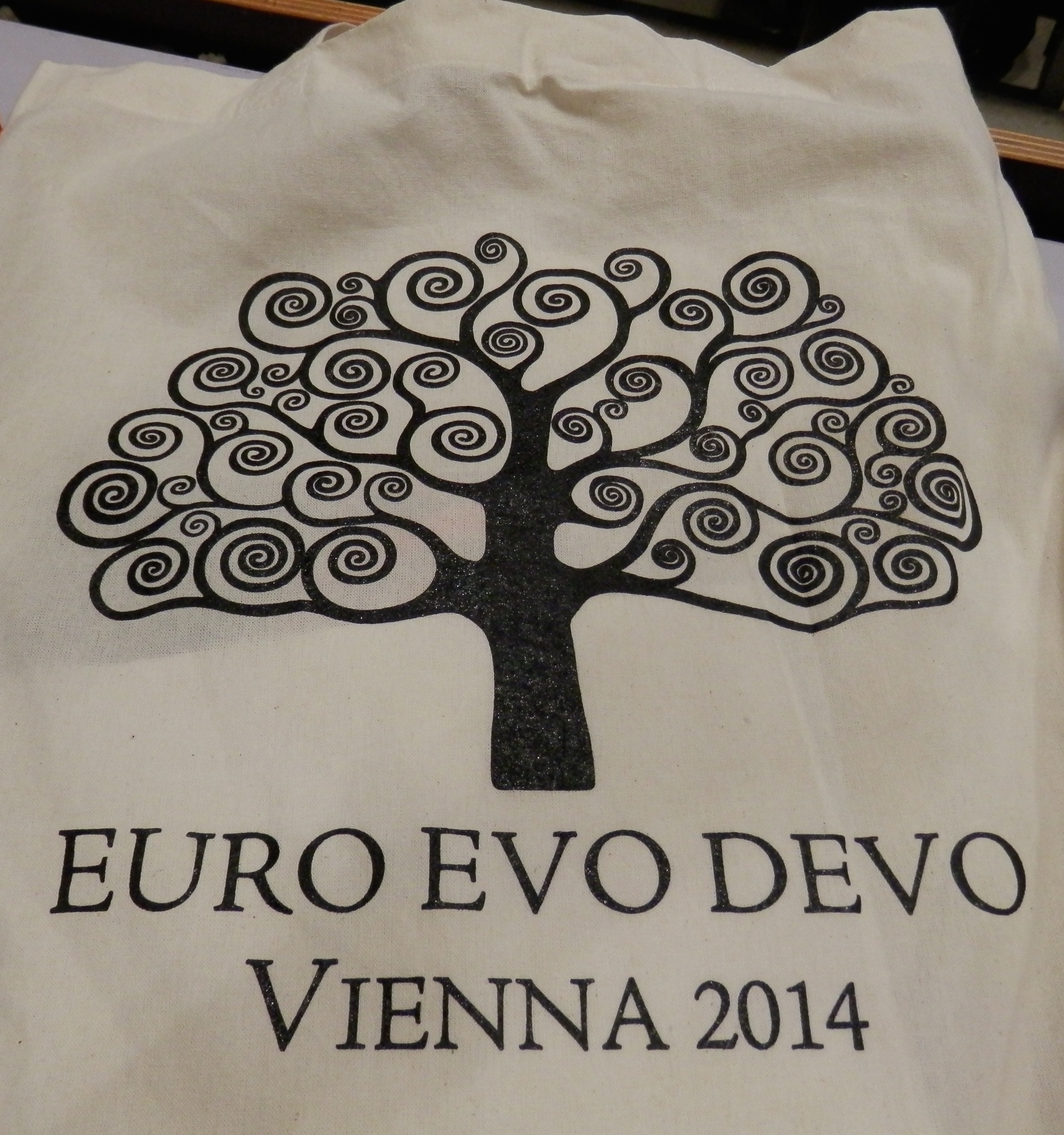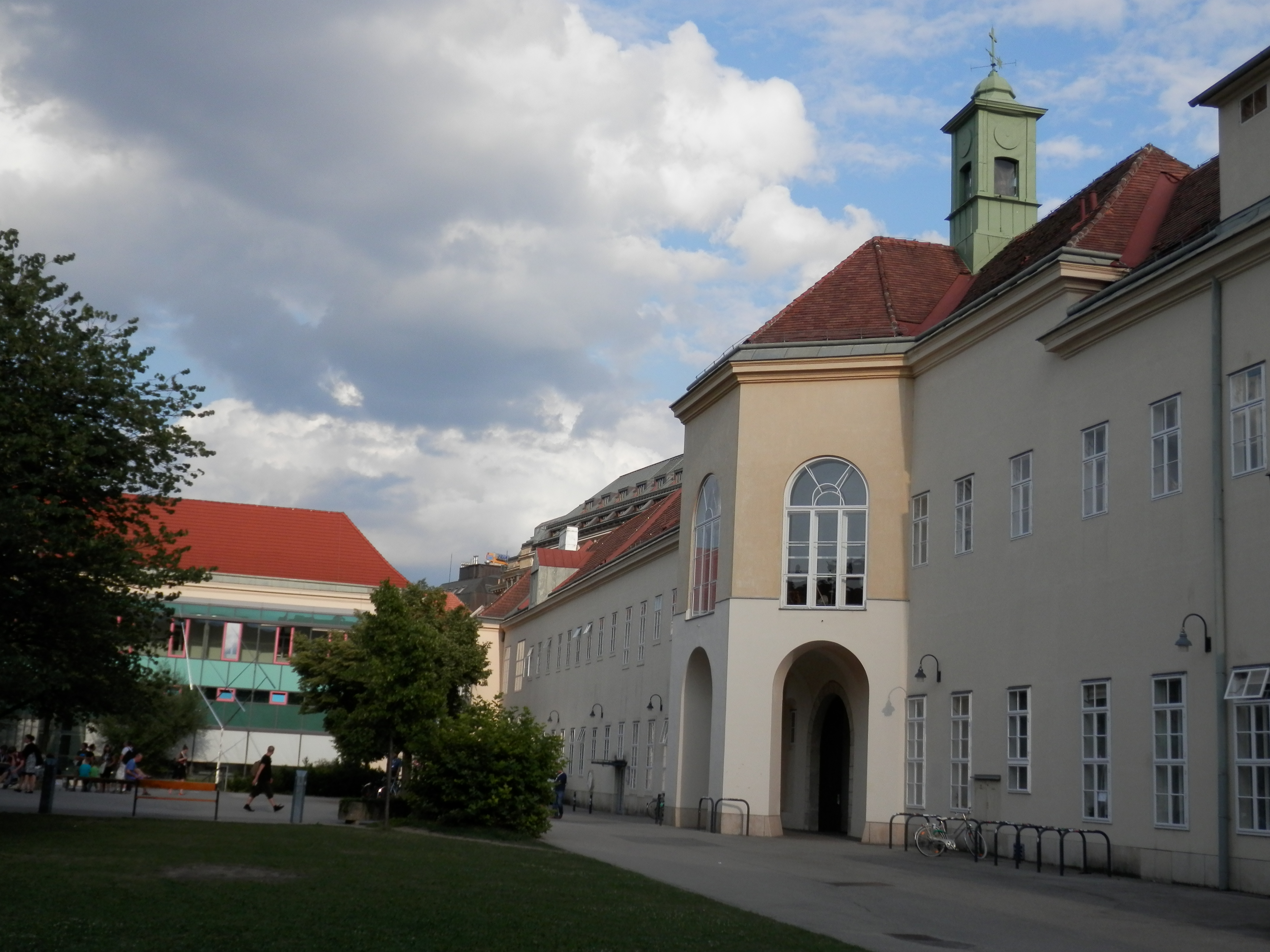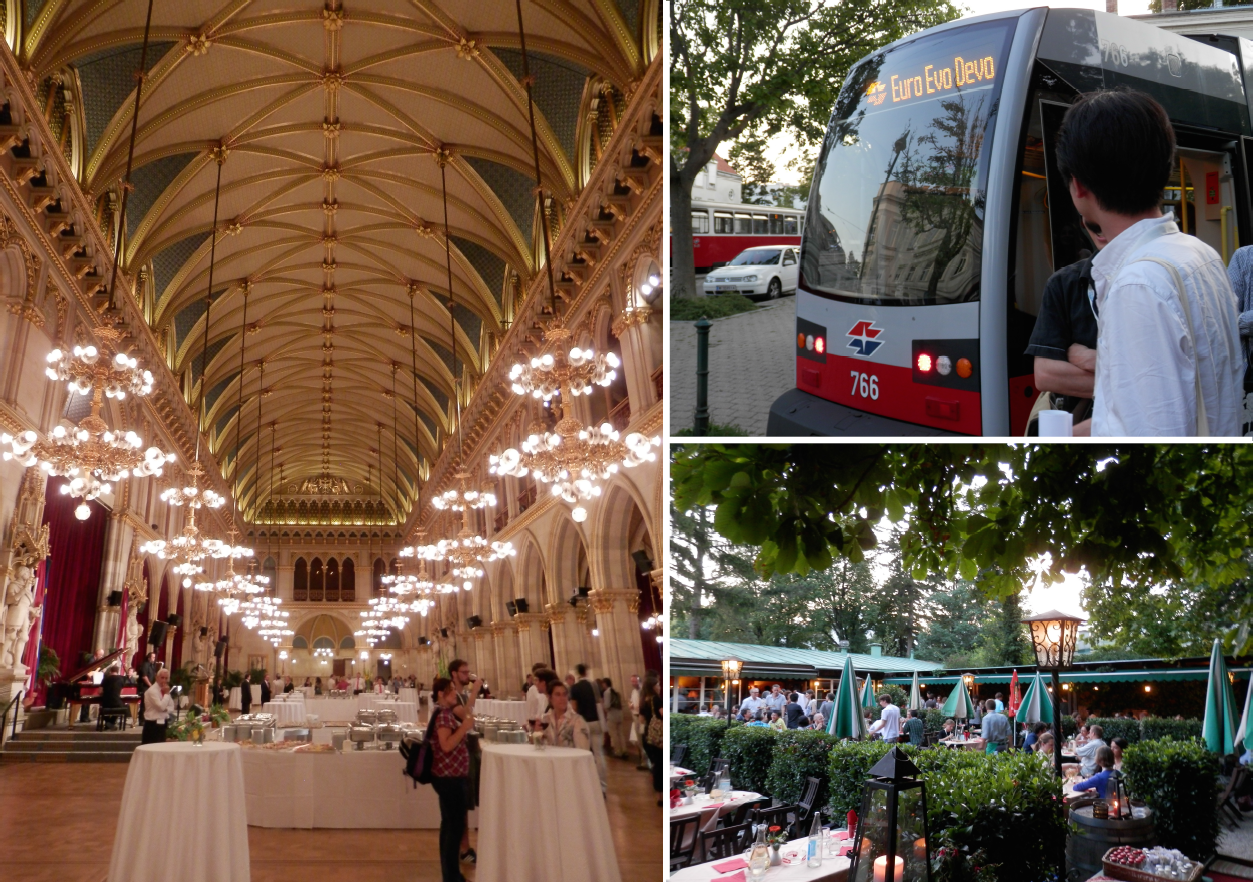An evolving field- notes from the European Evo Devo meeting
Posted by Catarina Vicente, on 7 August 2014
Coming from a cell biology background, one of the most exciting things about attending developmental biology conferences for me is the range of (unusual) model organisms used in this field. So when the opportunity arose to go to this year’s European Evolutionary Developmental Biology (Evo-Devo) meeting in Vienna, I was very keen to attend (although I admit that the prospect of delicious Mozart Kugeln chocolates may have had something to do with it too!). In this post I will give you my perspective on this meeting, but with 3 days worth of parallel sessions (sometimes 5 lectures running simultaneously!) I may have missed important points. If that is the case, please add your thoughts to this post by leaving a comment!
 The 2014 European Evo-Devo took place at a lovely campus of the University of Vienna, a historical venue that was once a general hospital. The hosting city also has a particular association to the European Society for Evo-Devo because of the society’s logo. The beautiful tree (that also featured in the conference bags) is inspired by the work of Gustav Klimt, an Austrian artist that was part of the Vienna Secession movement. The society started its activities in 2006, with its first meeting in Prague, and since then the meeting has increased steadily in scale. The current edition boasted almost 600 attendees. Not bad for a field that, as we were reminded by the president of the society, Gerd Müller, in his opening address, was initially described as a ‘short term enterprise, an altogether misguided one’ when it first took off in the ‘80s! The American researchers in the field have taken a bit longer to get organised, but it was announced at this meeting that the Pan-American society for Evo-Devo has been officially launched.
The 2014 European Evo-Devo took place at a lovely campus of the University of Vienna, a historical venue that was once a general hospital. The hosting city also has a particular association to the European Society for Evo-Devo because of the society’s logo. The beautiful tree (that also featured in the conference bags) is inspired by the work of Gustav Klimt, an Austrian artist that was part of the Vienna Secession movement. The society started its activities in 2006, with its first meeting in Prague, and since then the meeting has increased steadily in scale. The current edition boasted almost 600 attendees. Not bad for a field that, as we were reminded by the president of the society, Gerd Müller, in his opening address, was initially described as a ‘short term enterprise, an altogether misguided one’ when it first took off in the ‘80s! The American researchers in the field have taken a bit longer to get organised, but it was announced at this meeting that the Pan-American society for Evo-Devo has been officially launched.
From an outsider’s perspective one of the most striking features of this meeting was the breath of topics covered and the diversity of backgrounds of the attendees. I met developmental biologists, genomics researchers, palaeontologists, physicists, and more. There were talks ranging from morphogenesis and regeneration to the evo-devo of behaviour and eco-evo-devo. In fact, a surprisingly small number of talks actually fitted in what would have been my definition of evo-devo. The talk given by Blanche Capel (Duke University), for example, was along the lines of my expectations: after studying mouse gonad development for many years, part of her lab’s efforts focused on the equivalent system in turtles, in an attempt to understand whether there is an underlying signalling mechanism that has evolved to regulate sex determination in different organisms. However, Michael Travisano’s work (University of Minnesota), studying the evolution of multicellularity in vitro (with the creation of ‘snowflake’ yeast) was very much a talk on the mechanisms of evolution, while Olivier Hamant’s talk (ENS Lyon) on plant morphogenesis was a cross between developmental biology and mechanics. Not that this is a problem – as Gerd Müller stated in the conference booklet: ‘it is this broad interpretation of Evo-Devo that our society intends to foster’. The benefits of exposing yourself to other fields and ways of thinking are immense, especially for young researchers, and the Euro Evo-Devo meeting is a fantastic place to do just that (you can appreciate the broad range of issues covered by checking the conference programme here).
One session I found particularly interesting was on the future of Evo-Devo, where a number of key issues were discussed in an open forum. Is Evo-Devo a field, a connection point between fields or just a way of thinking? How is evo-devo changing? One might argue that a precise definition is not important, but there are practical consequences. As pointed out by members of the community, a clearly defined field with clearly defined objectives can be more successful in funding applications, as well as in persuading universities to allow evo-devo courses to be taught (something that the publishing of an Evo-Devo textbook might be able to address).
A personal highlight was the ‘living fossils’ session. ‘Living fossils’ is a term that refers to species that are thought not to have changed much over time. However, in this session we were persuaded of how inadequate this term is, as talk after talk showed how so many of the species considered to be unchanged actually differ from their fossilised relatives. I thought it was particularly interesting how in many cases this was shown from a very evo-devo perspective: by comparing the development (e.g. larval stages) of living animals and their fossil counterparts. Scott Gilbert’s talk (University of Helsinki) turned the concept of the individual upside down, by suggesting that we are not individuals but holobionts- us and our microbiome. He then argued that if that is the case maybe we should be studying the evo-devo of holobionts, and provided examples showing the impact of the microbiome on an individual’s development and evolution. Another favourite of mine was the talk by Nadia Fröbisch (Museum fur Naturkunde Berlin). She addressed the question of whether the ancestors of current amphibians were able to regenerate their limbs by looking through the fossil record. She noticed that fossils from a specific extinct species often showed digits that were malformed, fused or in unusual numbers- the type of mistakes that often happen when modern salamanders regenerate their limbs.
In addition to the great science, the meeting also stood out for two great social events: the evening reception at the Vienna Town Hall, a beautiful neo-gothic building where we were greeted with live music and lovely food (maybe this kind treatment stems from the fact that the mayor of Vienna studied Biology!); and the conference dinner, which took place in a Heuriger (traditional wine tavern), following a short trip in a specially booked ‘Euro Evo Devo’ tram.
Overall I really enjoyed this meeting. The variety and range of topics covered, as well as the unusual critters lurking in most talks, meant that there was always an interesting session or talk to attend. In addition, despite the relatively large size of the meeting, there was a great willingness from everyone’s part to interact and discuss science. If you would like to join in, look out for the next Euro Evo-Devo meeting, which will take place in Uppsala (Sweden) in 2016.




 (3 votes)
(3 votes)
Some of the talks of this meeting are now available on YouTube: http://evodevo2014.univie.ac.at/links-to-videos